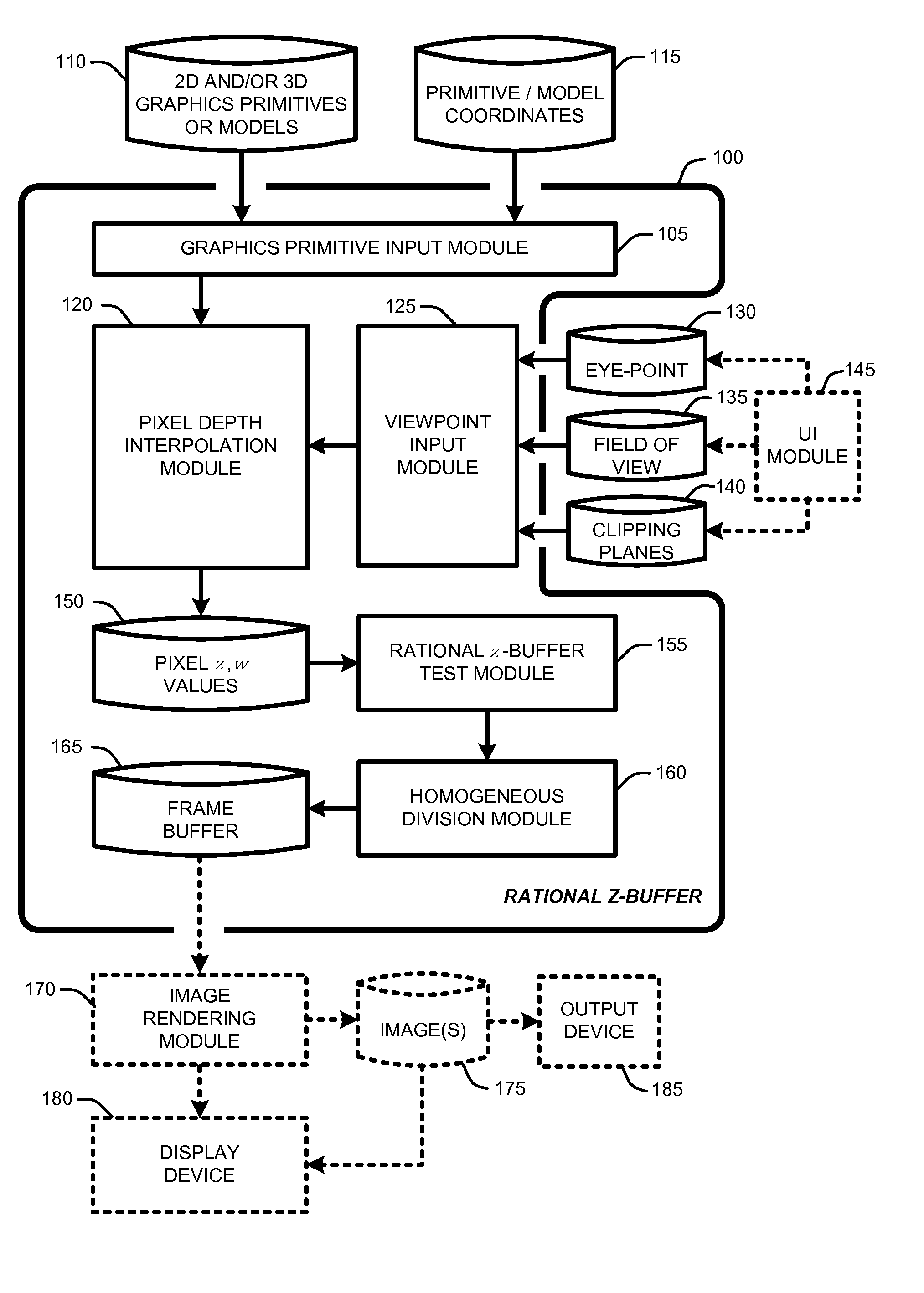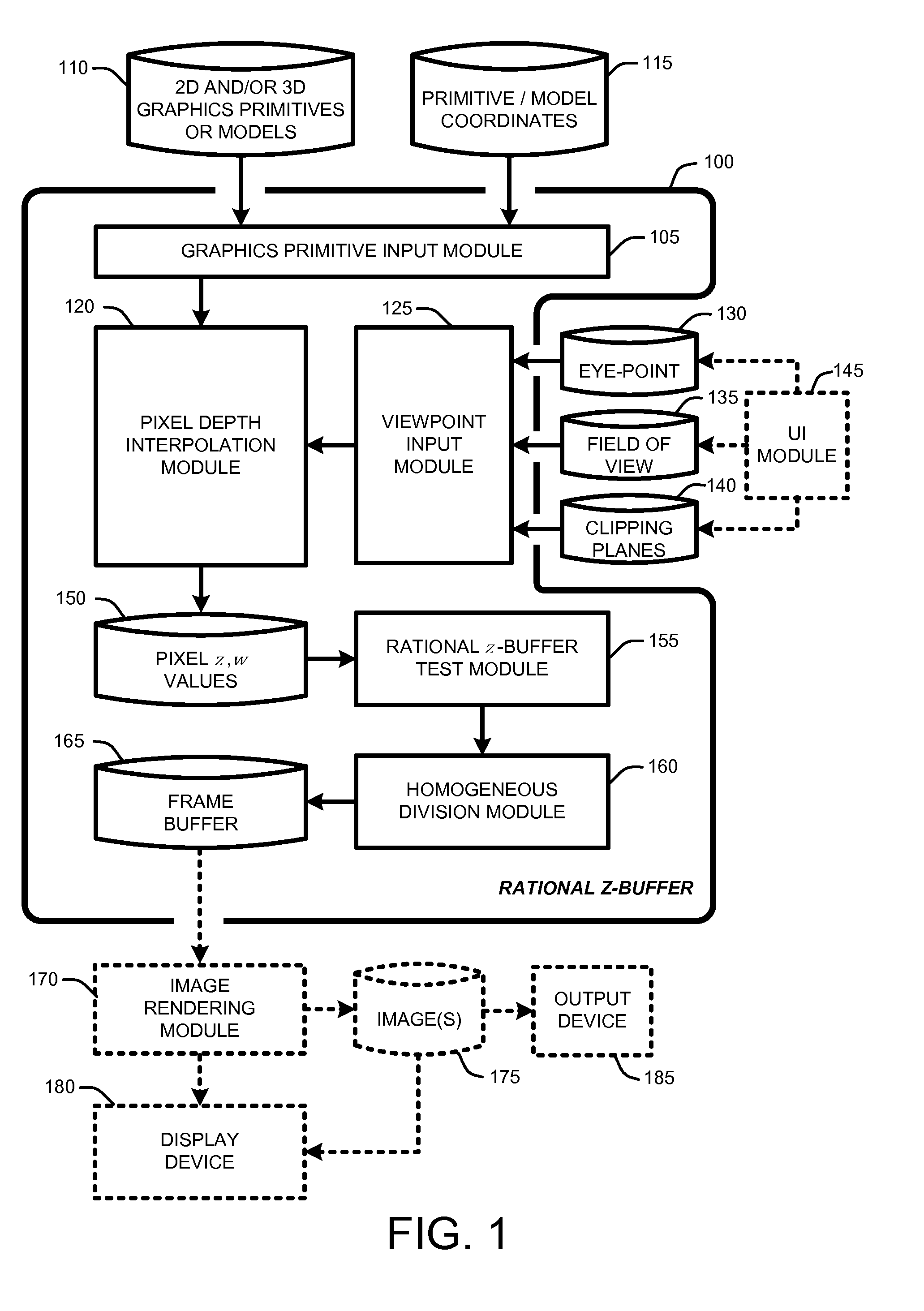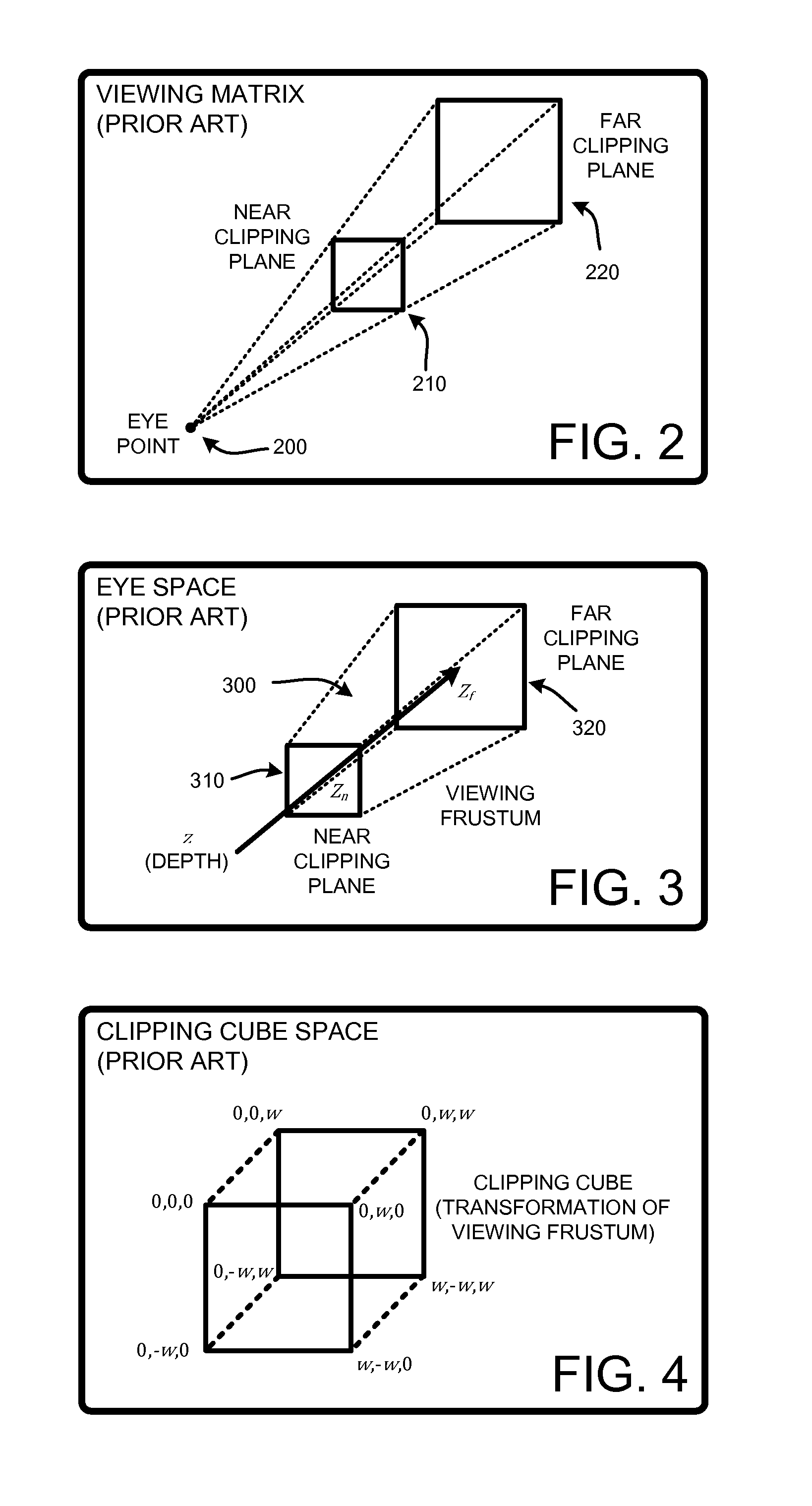Rational z-buffer for decreasing a likelihood of z-buffer collisions
a z-buffer and probability technology, applied in the field of z-buffer, can solve the problems of individual pixels' visible artifacts in images, and achieve the effect of greatly reducing the probability of z-buffer collision, significantly reducing the resultant artifacts, and reducing the likelihood of z-buffer collision
- Summary
- Abstract
- Description
- Claims
- Application Information
AI Technical Summary
Benefits of technology
Problems solved by technology
Method used
Image
Examples
Embodiment Construction
[0022]In the following description of the embodiments of the claimed subject matter, reference is made to the accompanying drawings, which form a part hereof, and in which is shown by way of illustration specific embodiments in which the claimed subject matter may be practiced. It should be understood that other embodiments may be utilized and structural changes may be made without departing from the scope of the presently claimed subject matter.
[0023]1.0 Introduction:
[0024]In general, a “Rational Z-Buffer” as described herein, first determines corresponding z and w values by evaluating a linear equation in x and y for each pixel at screen position, x y. The linear equations have the property that vertices are interpolated. These interpolated depth values are subject to the same non-uniform distribution in clipping-cube space as vertices.
[0025]Further, instead of storing a single values corresponding to the result of the division z / w (as with conventional z-buffer testing), the Rati...
PUM
 Login to View More
Login to View More Abstract
Description
Claims
Application Information
 Login to View More
Login to View More - R&D
- Intellectual Property
- Life Sciences
- Materials
- Tech Scout
- Unparalleled Data Quality
- Higher Quality Content
- 60% Fewer Hallucinations
Browse by: Latest US Patents, China's latest patents, Technical Efficacy Thesaurus, Application Domain, Technology Topic, Popular Technical Reports.
© 2025 PatSnap. All rights reserved.Legal|Privacy policy|Modern Slavery Act Transparency Statement|Sitemap|About US| Contact US: help@patsnap.com



